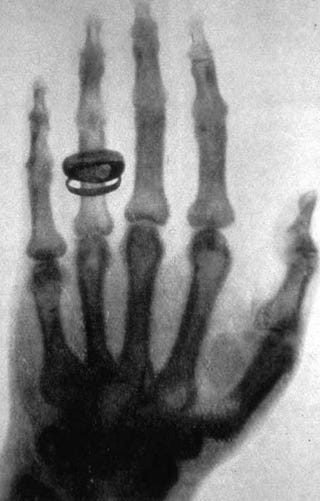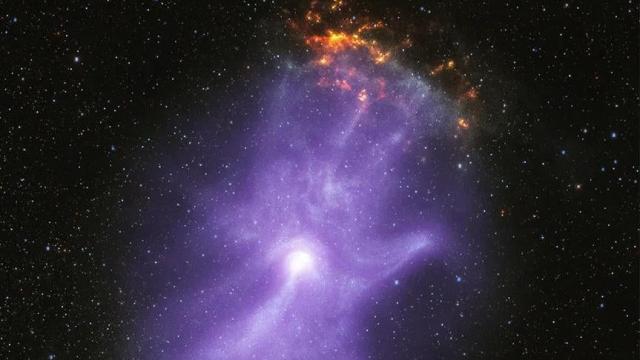Move over, Pillars of Creation—there’s a new show in town and it’s called MSH 15-52. Catchy, we know.
Okay, really it’s not a new show—better to call it a revival. The eerie pulsar wind nebula spreads from the pulsar PSR B1509-58, first observed by the Chandra X-ray Observatory in 2001. But now, a collaborative team has integrated observations from Chandra with new data from NASA’s Imaging X-ray Polarimetry Explorer (IXPE), providing novel insights into the nebula that eerily resembles a human hand. The researchers’ findings were published in The Astrophysical Journal.
IXPE was launched to space in December 2021, just weeks before the Webb Space Telescope. IXPE uses X-rays to understand some of the most compact objects in the universe, like neutron stars and black holes. Last year, the telescope observed superheated plasma surrounding black holes and spotted the closest black hole to Earth—a relatively small one about 1,600 light-years from our planet. But IXPE also studies pulsars—neutron stars that produce bursts of light—and the nebulae that surround them.
To produce the recent image, IXPE observed the nebula for 17 days—its longest observation of a single object since its launch. The telescope gathered data to analyze the magnetic field that provides foundational support to the structure. “The charged particles producing the X-rays travel along the magnetic field, determining the basic shape of the nebula, like the bones do in a person’s hand,” said Roger Romani, an astrophysicist at Stanford University and the study’s lead author, in a NASA release.

A noticeable feature in the ‘hand’ is a bright spot near its base, which streams towards the bottom-left side of the structure. This is an X-ray jet, and the bright spot indicates a region where many magnetic fields overlap and tangle. From this energetic hotspot, particles flow along magnetic field lines to other parts of the hand-shaped nebula.
“Shortly after Wilhelm Röntgen‘s discovery of X-rays on November 8, 1895, he created one of the most famous of all scientific images: an exposure of a colleague’s left hand, showing the bones with attendant rings,” Romani said in a guest blog on the Chandra website. “IXPE has thus followed Röntgen’s lead in imaging the magnetic field ‘bones’ of the cosmic hand.”
NASA releasing an image of an eerie, hand-like structure around Halloween is becoming routine. Last year, the space agency dropped a haunting Webb telescope image of the Pillars of Creation that made the region of the Eagle Nebula look like a zombie’s undead hand.
At the tips of MSH 15-52’s purple, finger-like structures is a darker orange-brown cloud. This is the remnant of the supernova that created the pulsar. So in a way, the nebula’s cosmic hand is reaching back to where it started from.
